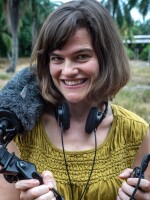MARY LOUISE KELLY, HOST:
In May, a group of scientists shifted the debate about the origins of COVID-19. They published a letter in the journal Science saying the lab leak theory needed to be taken seriously. Now, that theory proposes the virus came from a lab in Wuhan rather than from an infected animal. After the letter came out, President Biden ordered the U.S. intelligence community to double down on efforts to trace the pandemic's origins. Now one scientist who co-authored that letter has backed away from the lab leak theory. NPR's Michaeleen Doucleff explains why.
MICHAELEEN DOUCLEFF, BYLINE: In the past decade, Michael Worobey has become a bit like the Sherlock Holmes of pandemic origins. His work has helped to explain how the 1918 flu emerged and how HIV came to the U.S. earlier than people thought.
MICHAEL WOROBEY: It got to New York City pretty darn early, probably around 1970, 1971, somewhere in there.
DOUCLEFF: Worobey is an evolutionary biologist at the University of Arizona. A few months ago, he thought that the lab leak theory seemed just as plausible as the alternative, that the virus jumped directly from an animal into people.
WOROBEY: So I was on that Science letter asserting that more investigation is needed of both possibilities.
DOUCLEFF: Worobey has been modeling how the virus spreads around a city. Recently, two pieces of information jumped out at him. First, he plotted on a map the earliest known cases of COVID-19.
WOROBEY: If you open up Figure 1 of this paper that I just sent...
DOUCLEFF: On the map, there's a red dot where each early case lived in December 2019. The data come from the World Health Organization, but that data were missing two key elements - the location of the Huanan Seafood Market and the Wuhan Institute of Virology, where scientists studied bat coronaviruses. So Worobey added them to the map.
WOROBEY: It's a very simple thing to do, but it really paints a pretty clear picture, right?
DOUCLEFF: The dots show cases starting right near the Huanan Seafood Market and radiating out from there.
WOROBEY: The Huanan Market seems like the bullseye of this outbreak. It's quite extraordinary.
DOUCLEFF: And what about near the Wuhan Institute of Virology, or WIV?
WOROBEY: And there's nothing around the WIV.
DOUCLEFF: Given how contagious the virus is and that cases likely doubled every two to three days, Worobey would have expected infections near the lab if the virus started there.
WOROBEY: The bottom line is, it would be odd for it not to be spreading from there rather than from elsewhere.
DOUCLEFF: The other piece of data concerns what was being sold at the seafood market, what could have spread the virus. Gigi Gronvall is a biosecurities expert at Johns Hopkins University. She says the Chinese government have always claimed there were no illegal wildlife at that market.
GIGI GRONVALL: That market was operating completely legally. And it's like, OK. That is - you know, that's just on the face of it. You just know that that's not correct.
DOUCLEFF: Lo and behold, last month, researchers in China published a study showing the Huanan Seafood Market was one of four markets in Wuhan selling illegal wildlife, including two animals known to spread SARS coronaviruses - civets and raccoon dogs.
GRONVALL: They have pictures and notes and how much they cost, including the market in question, where some of these early cases were. And their work went to November of 2019.
DOUCLEFF: Gronvall says all this data don't prove an animal origin for the pandemic or disprove the lab leak theory.
GRONVALL: There are lots of pieces to still fill in, you know, but this report ties a lot of the pieces together that say that there is a really credible story for an animal origin to SARS-CoV-2.
DOUCLEFF: And Worobey agrees. Given the data available now, he thinks the most likely scenario is that the pandemic started in the Huanan Seafood Market.
WOROBEY: I do think the cross-species transmission without a lab escape is the most likely scenario by a long shot.
DOUCLEFF: But if new information comes out, he says, his thinking could shift again because that's how science works.
Michaeleen Doucleff, NPR News.
(SOUNDBITE OF AEROC'S "BLUE EYED BITTER") Transcript provided by NPR, Copyright NPR.



